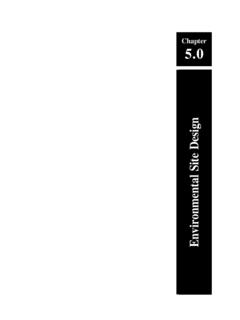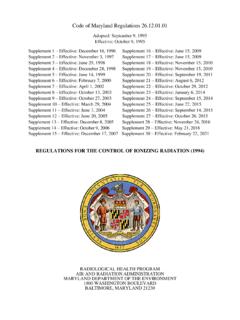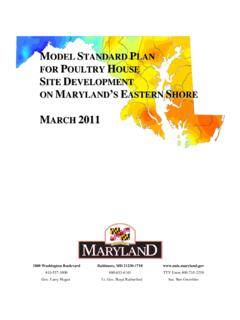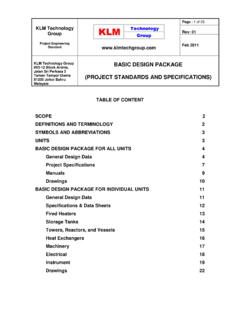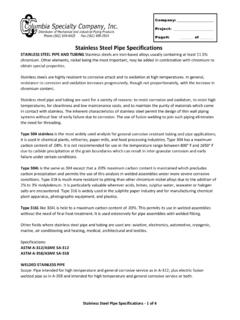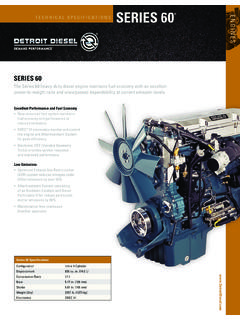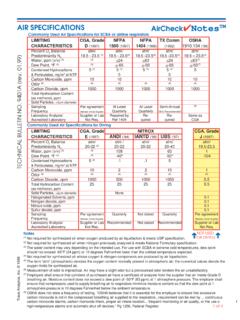Transcription of NRCS-MD Code No. 378 Pond Standards/Specifications
1 Appendix NRCS-MD Code No. 378 Pond Standards/Specifications Pond MD-378-1 NRCS - MARYLAND JANUARY 2000 USDA NATURAL RESOURCES CONSERVATION SERVICE MARYLAND CONSERVATION PRACTICE STANDARD POND CODE 378 (Reported in No.) DEFINITION A water impoundment made by constructing a dam or an embankment or by excavating a pit or dugout. In this standard, ponds constructed by the first method are referred to as embankment ponds, and those constructed by the second method are referred to as excavated ponds.
2 Ponds con-structed by both excavation and the embankment methods are classified as embankment ponds if the depth of water impounded against the em-bankment at the principal spillway storm design high water elevation is 3 feet or more (See Table 1). This 3 feet shall be measured from the low point on the upstream toe of the embankment to the design high water. PURPOSE To provide water for livestock, fish and wildlife, recreation, fire control, crop and orchard spray-ing, and other related uses, and to maintain or improve water quality.
3 This standard also ap-plies to stormwater management ponds. CONDITIONS WHERE PRACTICE APPLIES General - This practice applies where it is de-termined that stormwater management, water supply, or temporary storage is justified and it is feasible and practicable to build a pond which will meet local and state law requirements. This standard establishes the minimum accept-able quality for the design and construction of ponds if: 1. Failure of the dam will not result in loss of life; in damage to homes, commercial or in-dustrial buildings, main highways, or rail-roads; or interruption of the use or service of public utilities.
4 2. The product of the storage times the effective height of the dam is less than 3,000. Storage is the volume, in acre-feet, in the reservoir below the elevation of the crest of the emer-gency spillway. The effective height of the dam is the differ-ence in elevation, in feet, between the emer-gency spillway crest and the lowest point on a profile taken along the centerline of the dam, excluding the cutoff trench. If there is no emergency spillway, the top of the dam becomes the upper limit for determining the storage and the effective height.
5 3. For dams in rural areas, the effective height of the dam (as defined above) is 35 feet or less and the dam is hazard class a . For dams in urban areas, the effective height of the dam is 20 feet or less and the dam is haz-ard class a . Ponds exceeding any of the above conditions shall be designed and constructed according to the requirements of Technical Release 60. Exemptions - Soil Conservation District small pond approval is not required for small class a structures where the following exists: 1.
6 Ponds or other structures have less than four (4) feet of embankment, or 2. The storage at emergency spillway design high water elevation according to Table 1 does not exceed 40,000 cubic feet, and the Conservation practice standards are reviewed periodically, and updated if needed. To obtain the current version of this standard, contact the Natural Resources Conservation Service Pond MD-378-2 NRCS - MARYLAND JANUARY 2000 height of the embankment is 6 feet or less. The height of the embankment shall be measured from the top of the dam to the lowest point of excavation, excluding the cutoff trench, along the centerline of the dam.
7 In addition, an embankment pond that meets the criteria below shall be considered an excavated pond and is also exempt from small pond ap-proval. 1. The calculation of 10H+20=L, where H=height from the pond bottom to the top of the dam, is provided, and 2. The projection of L horizontally downstream from the pond bottom is below the existing or proposed ground, and 3. The existing or proposed downstream ground slope within the projection of L is less than 10% at any point.
8 The review and design of such class a struc-tures shall be based on sound engineering judg-ment assuring a stable outfall for the ten (10) year, 24-hour storm event. Site Conditions - Site Conditions shall be such that runoff from the design storm can be safely passed through (1) a natural or constructed emer-gency spillway, (2) a combination of a principal spillway and an emergency spillway, or (3) a principal spillway. Drainage Area - The drainage area above the pond must be protected against erosion to the extent that expected sedimentation will not shorten the planned effective life of the structure.
9 For ponds whose primary purpose is to trap sediment for water quality, adequate storage should be provided to trap the projected sediment delivery from the drainage area for the life of the pond. If the intent is to maintain a permanent pool, the drainage area should be at least 4 acres for each acre-foot of permanent storage. These recom-mendations may be reduced if a dependable source of ground water or diverted surface water contributes to the pond. The water quality shall be suitable for its intended use.
10 Soils Investigation - A soils investigation is re-quired on all ponds. As a minimum it shall in-clude information along the centerline of the proposed dam, in the emergency spillway loca-tion, and the planned borrow area. The type of equipment used and the extent of the investiga-tion will vary from site to site. All investigations shall be logged using the Unified Soil Classifica-tion System. Road Embankments - Where road embankments are being designed to impound a specific volume of water, either as a permanent pool or temporary stormwater storage, special design and evalua-tion criteria may be required as determined by Appendix B.




